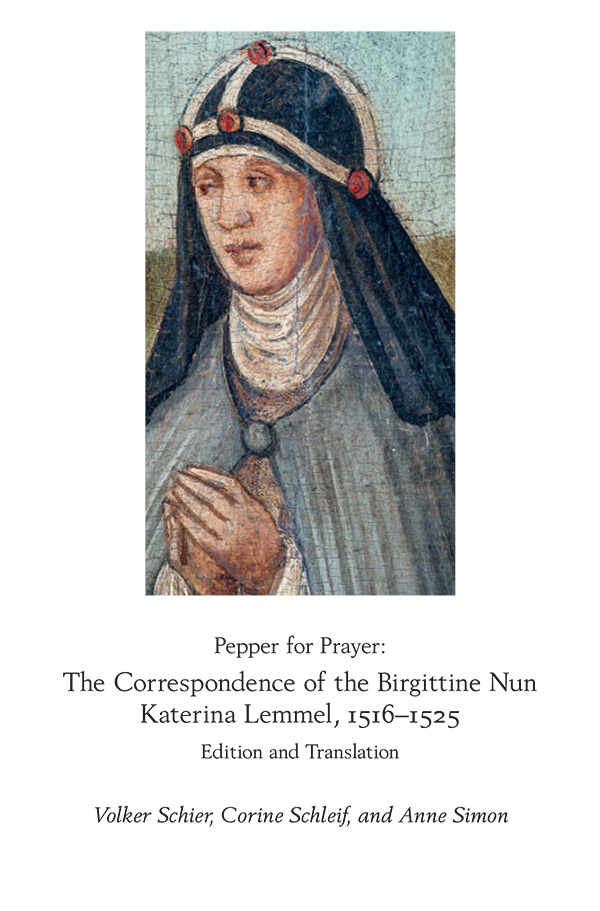Earlier this evening, thanks to the technology of Zoom, I was aable to attend an international webinar to launch this book:
Volker Schier, Corine Schleif, and Anne Simon (ed. and transl.): Pepper for Prayer: The Correspondence of the Birgittine Nun Katerina Lemmel, 1516–1525. 2019. SEK 200. ISBN 978-91-88568-76-2.
 The edition contains the first complete and unredacted Early New High German texts of the Lemmel letters together with a revised modern English translation. Readers experience the joys and challenges of late-medieval Birgittine life through Lemmel’s own words as she communicates her thoughts and feelings from her perspective as a member of the Maihingen community in order to garner the empathy and support of her urban patriciate family, whom she left in Nuremberg. This unique collection of missives documents the complexities of spiritual economies, medieval gift-giving cultures, domestic and international commerce, as well as theological tensions leading to the Reformation.
The edition contains the first complete and unredacted Early New High German texts of the Lemmel letters together with a revised modern English translation. Readers experience the joys and challenges of late-medieval Birgittine life through Lemmel’s own words as she communicates her thoughts and feelings from her perspective as a member of the Maihingen community in order to garner the empathy and support of her urban patriciate family, whom she left in Nuremberg. This unique collection of missives documents the complexities of spiritual economies, medieval gift-giving cultures, domestic and international commerce, as well as theological tensions leading to the Reformation.
Born in 1466, Katerina Imhoff Lemmel was raised in the famous Imhoff Trading Company, an international firm that specialized in spices and metal goods. She married Michel Lemmel in 1484 and became a widow in 1513. Herself a successful businesswoman, Lemmel, against the wishes of her family, decided to enter the Birgittine monastery of Maria Mai, where she died in 1533. From 1516 to 1525, she maintained regular contact with her relatives through the letters she sent back to her native Nuremberg, primarily to her cousin Hans V Imhoff, general manager of the family company, banker, and member of the Inner City Council of Nuremberg.
From the material quoted from the letters by the authors in the webinar this is indeed a remarkable and lively insight into the world of a Birgittine ( Bridgettine ) community and to the social and commercial life of the Nuremberg patriarchate. Katerina herself emerges as an intelligent and articulate woman, forceful and determined, but also devout and concerned for both her family and her religious community. This is a book that should take its place alongside the established collections of late medieval and early modern correspondence, not only for its main protagonists but also for it incidental glimpses of life at the time.
The portrait on the cover is of Katerina from a family monument which still survives in Nuremberg. She is wearing the distinctive headless of members of her Order.
My interest in the Birgirrines / Bridgettines stems in part from their importance in the spiritual life of fifteenth and early sixteenth century England as Northern Europe, and to an interest in their one English house, Syon Abbey, founded by King Henry V, and which, amazingly, survived exile and all manner of events until it finally closed in 2012. I did once manage a fleeting visit to their home in Devon in 2004, and saw a sister taking her morning stroll in the grounds - a precious link to a glorious past.


No comments:
Post a Comment